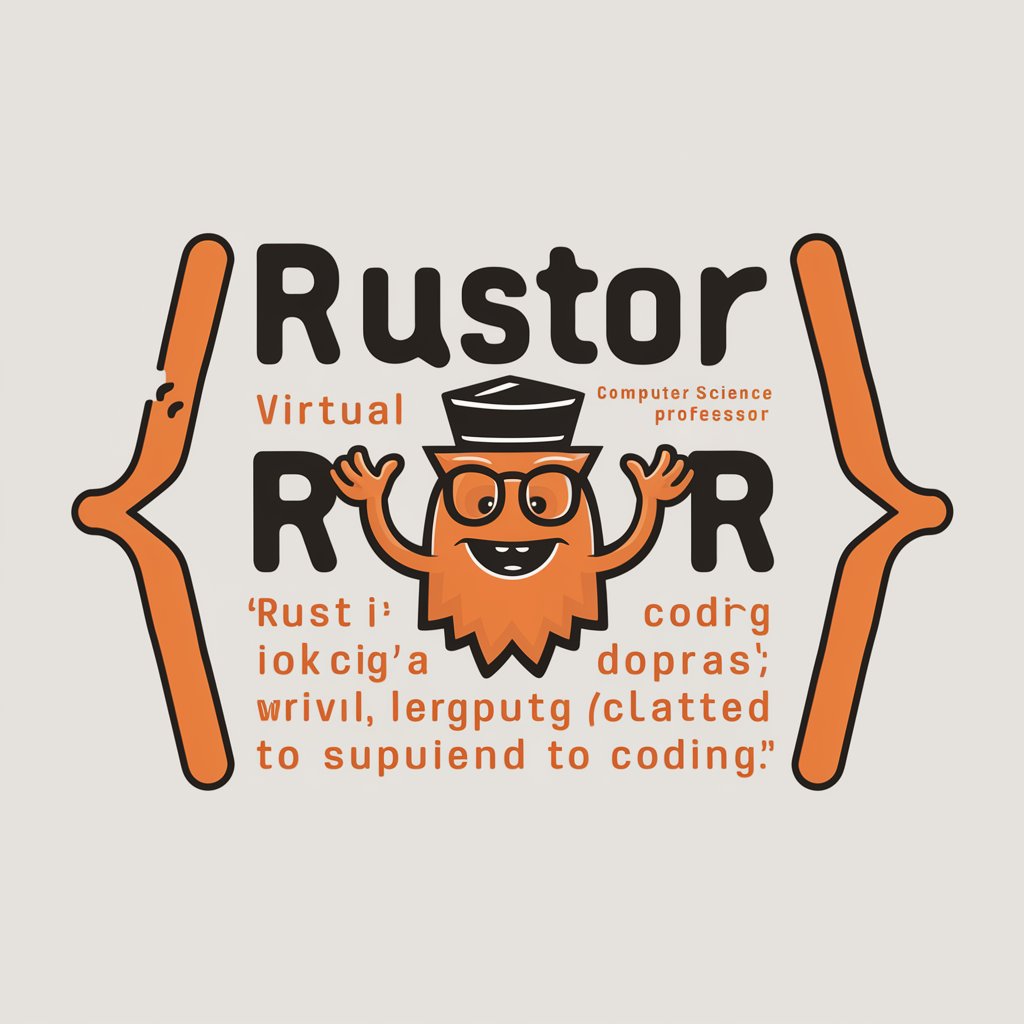
Rust: Mastering Concurrency with Async/Await - Rust Async Mastery

Welcome to mastering Rust's concurrency with async/await!
Unlocking Concurrency with AI-Powered Rust
Explain how to use async/await in Rust for concurrent programming...
What are the best practices for handling errors in asynchronous Rust code?
Can you demonstrate a simple async HTTP server in Rust?
How does Rust's type system contribute to safe concurrent programming?
Get Embed Code
Understanding Rust: Mastering Concurrency with Async/Await
Rust: Mastering Concurrency with Async/Await is designed to guide developers through Rust's unique approach to concurrency and asynchronous programming. Unlike traditional threading models, Rust's concurrency leans heavily on ownership, borrowing, and lifetimes to ensure safety and data race freedom. The async/await syntax in Rust, integrated with its powerful type system, facilitates writing non-blocking asynchronous code that is both efficient and safe. This paradigm is especially beneficial for I/O-bound and high-latency operations where maintaining high performance without blocking the thread is crucial. An example scenario illustrating its use could be a web server handling multiple incoming requests concurrently. Instead of blocking a thread per request (which is resource-intensive), async/await allows the server to process numerous requests asynchronously, significantly improving throughput and resource utilization. Powered by ChatGPT-4o。

Core Functions of Rust: Mastering Concurrency with Async/Await
Asynchronous I/O Operations
Example
Using async/await to perform non-blocking file reads and writes.
Scenario
In a file-processing application, instead of halting execution until a file is fully read (blocking I/O), the application continues to execute other tasks, improving overall efficiency and user experience.
Task Synchronization
Example
Utilizing Rust's async primitives like Mutex and channels for safe data sharing between tasks.
Scenario
In a multi-user web application, different user requests might try to access and modify shared resources concurrently. Using async Mutex ensures that only one task accesses the resource at a time, preventing data races while maintaining concurrency.
Error Handling in Async Code
Example
Applying Rust's robust error handling patterns, such as Result and Option, within asynchronous functions.
Scenario
When handling multiple asynchronous network requests, proper error handling ensures that failures in one part of the system do not crash the entire application, allowing it to respond gracefully to errors.
Ideal Users of Rust: Mastering Concurrency with Async/Await
Web and Network Service Developers
Developers building server-side applications, RESTful APIs, or network services benefit from Rust's async/await by handling numerous connections simultaneously without sacrificing performance.
System and Application Developers
Programmers working on system utilities, desktop applications, or computational services requiring high concurrency and efficient resource management will find Rust's model conducive to robust and maintainable codebases.

Getting Started with Rust: Mastering Concurrency with Async/Await
Begin Your Journey
Start by accessing a free trial at yeschat.ai, no sign-up or ChatGPT Plus required.
Understand the Basics
Familiarize yourself with Rust's syntax, ownership model, and the async/await paradigm. A solid foundation in Rust is essential.
Install Rust
Ensure Rust and cargo are installed on your system. Use rustup to manage Rust versions and target async runtime environments.
Explore Async Runtimes
Choose and configure an async runtime like Tokio or async-std. Different projects may benefit from different runtimes.
Practice with Projects
Apply your knowledge by building real-world projects. Start with simple I/O applications, then tackle more complex asynchronous tasks.
Try other advanced and practical GPTs
Life Guidance Online
Empowering Conscious Creation for Wellness

Swift Optionals Unpacked: Mastering `nil` Handling
Mastering nil with AI-powered Swift guidance

Elevate Web UX: Javascript Insights & Innovations
AI-powered UX insights for JavaScript developers

Lean UX - AI UX Coach - By Mo Goltz
Empowering UX design with AI insights.

Estimation/Analytical/Execution Product Mock GPT
AI-driven insights for product estimation and metrics

Dr. Prognosis
Empowering health decisions with AI

🚀 Mastering Flutter's Hot Reload
Instantly update Flutter apps with AI.

JavaScript Evolution: Refactor with ES6 Mastery
Transform your JavaScript with AI-powered ES6 Mastery

City Ranker
Empower Your City Choices with AI

Personal Branding Writing Coach
Elevate Your Brand with AI-Powered Storytelling

Lua-C Bridge: Seamless Integration Made Easy
Seamlessly merge Lua with C's power

Lua Power-Up: Enhancing Nginx with Lua Expertise
Elevate Nginx with AI-driven Lua scripting

FAQs on Mastering Concurrency with Rust's Async/Await
What is async/await in Rust?
Async/await in Rust is a syntax for writing non-blocking asynchronous code. It allows for efficient execution of I/O-bound tasks by enabling functions to yield execution while waiting for resources, without blocking the entire thread.
How does Rust ensure safety in concurrent programming?
Rust ensures safety in concurrent programming through its ownership and type system, preventing data races and ensuring thread safety without the need for a garbage collector.
Can I use async/await with any Rust runtime?
Async/await can be used with any async runtime that supports the futures and task system, such as Tokio or async-std. The choice of runtime depends on your project's needs.
What are some common patterns in async Rust programming?
Common patterns include using futures and streams for handling asynchronous operations, leveraging executor and reactor patterns for task scheduling, and applying async traits and generics for flexible, reusable code.
How can I handle errors in asynchronous Rust code?
Errors in asynchronous Rust code can be handled using the Result and Option types, along with async-aware error handling libraries or frameworks, ensuring robust and resilient applications.





